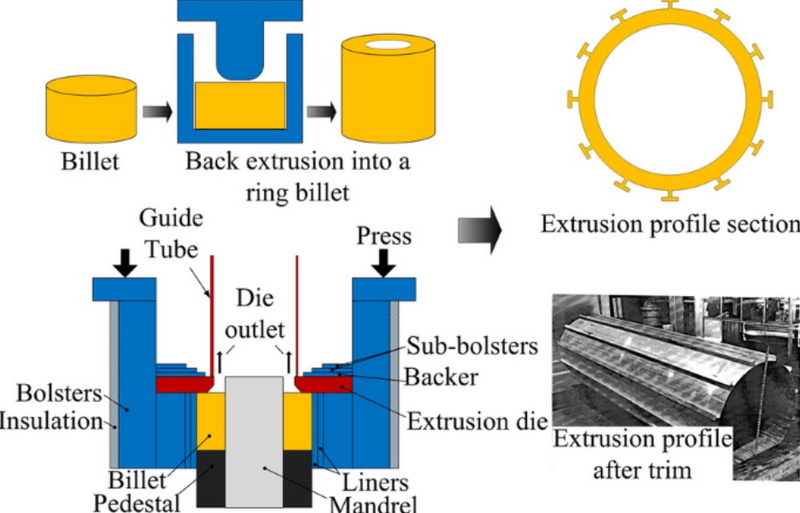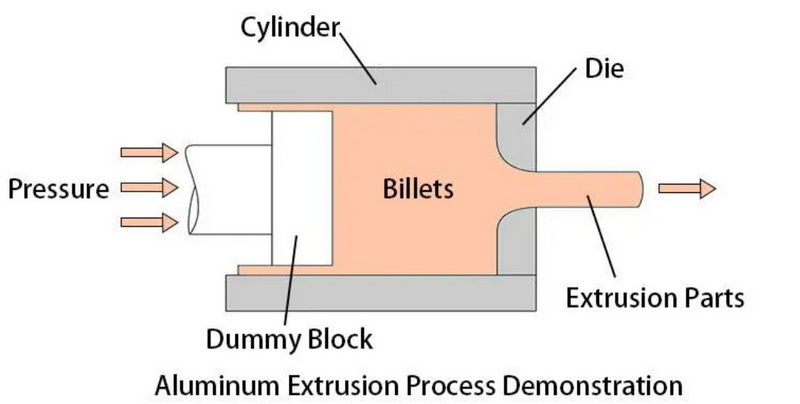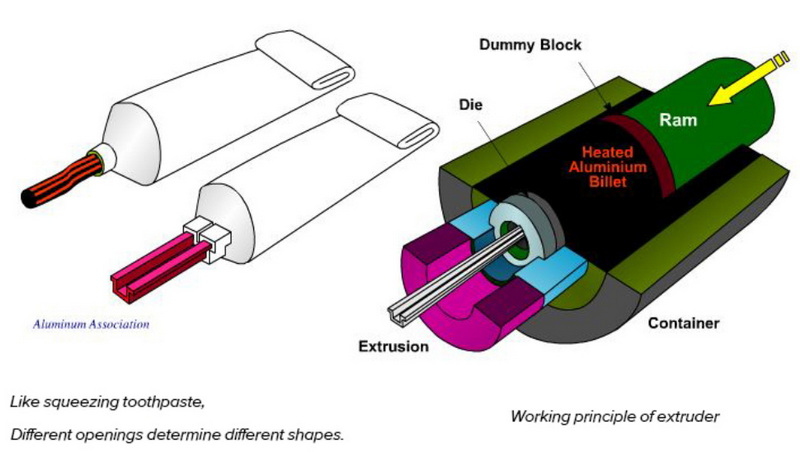Content Menu
● What is Aluminum Extrusion?
● Key Factors to Consider When Choosing an Aluminum Extrusion Model
>> 1. Application Requirements
>> 2. Material Properties
>> 3. Profile Design
>> 4. Surface Finish Options
>> 5. Manufacturing Constraints
>> 6. Cost Efficiency
● Common Aluminum Extrusion Models
● Step-by-Step Guide to Choosing the Right Model
● Visual Examples of Aluminum Extrusions
● Conclusion
● FAQs
>> 1. What is the most common aluminum alloy used in extrusions?
>> 2. How do I determine the load capacity of an extrusion?
>> 3. What are T-slot aluminum extrusions used for?
>> 4. Can I customize an aluminum extrusion profile?
>> 5. What surface finishes are available for aluminum extrusions?
● Citations:
Aluminum extrusions are widely used in various industries due to their versatility, strength, and lightweight properties. Whether you're designing a structural frame, creating custom parts, or assembling a product, selecting the right aluminum extrusion model is critical to achieving optimal performance and cost efficiency. This comprehensive guide will walk you through the key considerations for choosing the right aluminum extrusion model for your specific needs.

What is Aluminum Extrusion?
Aluminum extrusion is a manufacturing process where aluminum alloy is heated and forced through a shaped die to create profiles with specific cross-sectional shapes. These profiles can range from simple tubes and bars to intricate designs tailored for unique applications. The process offers numerous benefits, including:
- Lightweight yet strong materials
- Excellent corrosion resistance
- High thermal and electrical conductivity
- Customizability for specific designs
Key Factors to Consider When Choosing an Aluminum Extrusion Model
1. Application Requirements
The first step in selecting an aluminum extrusion model is understanding your application's specific needs. Consider the following:
- Load-Bearing Capacity: Determine the weight and forces the extrusion must support.
- Environmental Conditions: Assess exposure to elements like moisture, temperature, or chemicals.
- Aesthetic Needs: Decide if surface finish or appearance is critical.
For instance, T-slot aluminum extrusions are ideal for modular frames due to their adaptability and strength, while decorative profiles may require a polished or anodized finish.
2. Material Properties
Different aluminum alloys offer varying properties. Commonly used alloys include:
- 6061 Alloy: High strength, corrosion resistance, and good machinability—ideal for structural applications.
- 6063 Alloy: Excellent surface finish and corrosion resistance—suitable for architectural uses.
- 7075 Alloy: Superior strength-to-weight ratio—used in aerospace applications.
Evaluate factors like strength, weldability, and corrosion resistance based on your project requirements.
3. Profile Design
The profile shape significantly impacts functionality and manufacturability. Key considerations include:
- Wall Thickness: Uniform thickness ensures efficient extrusion and reduces deformation risks.
- Geometry: Simple shapes are easier and cheaper to produce than complex ones.
- Channel Ratios: Maintain a 3:1 ratio between channel height and width for structural integrity.
For example, U-shaped channels are commonly used in construction, while hollow profiles reduce weight without compromising strength.
4. Surface Finish Options
Surface finishes enhance durability and aesthetics. Common options include:
- Anodizing: Improves corrosion resistance and appearance.
- Powder Coating: Adds color and protection.
- Mill Finish: A raw finish suitable for non-decorative applications.
Choose a finish that aligns with your functional and visual goals.
5. Manufacturing Constraints
Consider the manufacturing process limitations:
- Maximum size of the extrusion press
- Minimum wall thickness achievable
- Complexity of the die design
Working with an experienced manufacturer can help navigate these constraints effectively.
6. Cost Efficiency
Balancing cost with performance is crucial. Factors influencing cost include:
- Alloy selection
- Profile complexity
- Surface finishing requirements
- Order quantity
Opting for standard profiles instead of custom designs can reduce costs significantly.

Common Aluminum Extrusion Models
Here are some popular aluminum extrusion models categorized by their applications:
| Model Type | Applications |
| T-Slot Profiles | Modular frames, workstations, automation equipment |
| Round/Square Tubes | Structural supports, piping systems |
| Flat Bars | Construction, machinery components |
| U-Channels | Architectural framing, enclosures |
| Z-Profiles | Reinforcements in construction |
Step-by-Step Guide to Choosing the Right Model
1. Define your application's requirements (load, environment, aesthetics).
2. Select an appropriate aluminum alloy based on material properties.
3. Choose a profile design that meets functional needs while minimizing complexity.
4. Decide on surface finishing options based on durability and visual appeal.
5. Consult with manufacturers to ensure feasibility and cost efficiency.
Visual Examples of Aluminum Extrusions
Below are some examples of aluminum extrusions in various shapes:
T-Slot Aluminum Extrusion
*T-slot profiles used in modular frames.*
Round Tubing
*Round tubing applied in piping systems.*
Anodized Finish
*Anodized aluminum extrusion with enhanced durability.*
Conclusion
Selecting the right aluminum extrusion model involves careful consideration of application requirements, material properties, profile design, surface finishing options, manufacturing constraints, and cost efficiency. By understanding these factors and consulting with experienced manufacturers, you can ensure that your chosen model meets both functional and budgetary needs.

FAQs
1. What is the most common aluminum alloy used in extrusions?
The 6061 and 6063 alloys are the most common due to their excellent strength-to-weight ratio, corrosion resistance, and machinability.
2. How do I determine the load capacity of an extrusion?
You can calculate load capacity using static calculations like bending stress analysis based on the profile's area moment of inertia.
3. What are T-slot aluminum extrusions used for?
T-slot extrusions are versatile components used in modular structures such as workstations, machine frames, and automation systems.
4. Can I customize an aluminum extrusion profile?
Yes, manufacturers often offer custom designs tailored to specific applications; however, this may increase costs compared to standard profiles.
5. What surface finishes are available for aluminum extrusions?
Common finishes include anodizing (for corrosion resistance), powder coating (for aesthetics), and mill finish (for non-decorative uses).
Citations:
[1] https://vention.io/resources/guides/t-slot-aluminum-extrusion-structure-design-guide-77
[2] https://get-it-made.co.uk/guides/aluminium-extrusion-guide
[3] https://www.profall.com/en/standard-aluminum-extrusion-profiles
[4] https://www.youtube.com/watch?v=iiGlq7408ME
[5] https://www.impol.com/everything-you-need-to-know-about-aluminum-extrusion/
[6] https://starext.com/news/aluminum-extrusion-finishing-fabrication-frequently-asked-questions-faq
[7] https://www.gabrian.com/aluminum-extrusion-alloys/
[8] https://www.freepik.com/free-photos-vectors/aluminum-extrusion
[9] https://leadrp.net/blog/a-complete-guide-to-aluminum-extrusion/
[10] https://aec.org/faqs






















